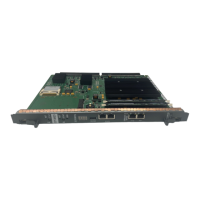26 Site planning
3 Record external or outdoor radio coverage.
4 Record where radio coverage is not feasible or requires specific
basestations.
5 Record areas excluded from radio coverage due to the proximity
of sensitive electronic equipment.
6 Record objects inside buildings that can affect radio coverage.
7 Record unsuitable basestation locations, such as stone columns,
air ducts or horizontally on the ceiling.
8 Discuss what basestations are to be installed out of sight.
See the preceding note.
9 Inquire about areas of special coverage, such as, elevators,
stairwells, and washrooms.
--End--
Profile handset use
Areas of above average traffic density can have a low number of
incumbent users but many incoming users. These can include areas
such as cafeterias, restaurants, canteens, and meeting room areas where
handset users tend to gather.
Another example of above average traffic density is an environment where
all occupants of an area are provided with handsets. This area requires
special planning.
Areas of below average traffic density are areas users access infrequently,
such as store rooms and maintenance areas.
Obtain the following information and enter it into the work order.
Procedure 6
Profiling handset users
Step Action
1 Record the number of handset users.
2 Record an estimate of the potential growth of handset users.
3 Locate and record areas of above average and below average
traffic density.
4 Determine and record which users have a wired IP phone in their
office.
5 Determine and record the locations of user offices.
Nortel Communication Server 1000
SIP DECT Fundamentals
NN43120-123 01.07
6 January 2009
Copyright © 2008-2009 Nortel Networks
.

